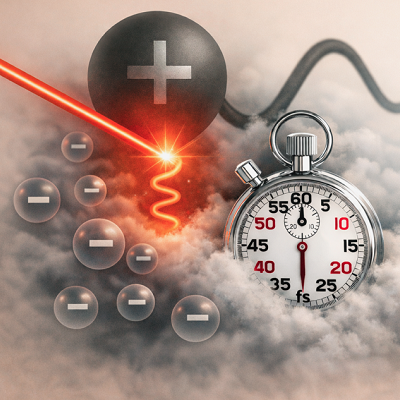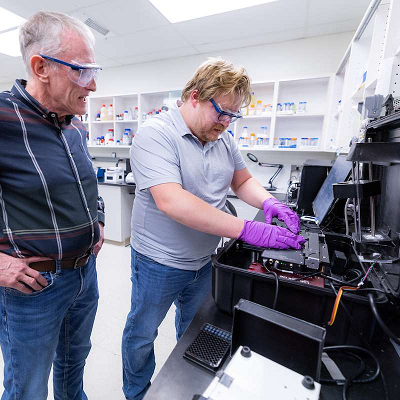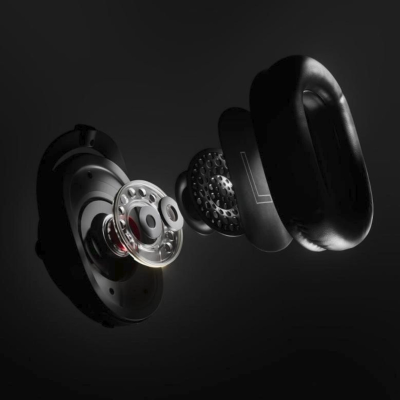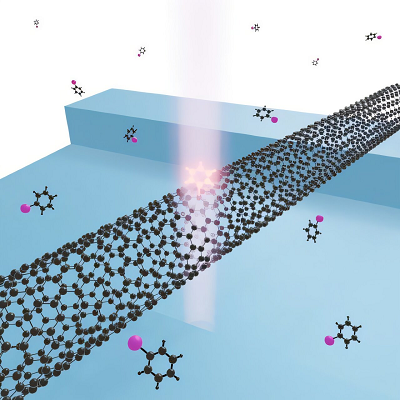Nanobubbles have been of particular interest in these areas because despite the small amount of energy needed for formation, their extreme localization opens up the potential for outsized impacts. However, understanding of the dynamic response in such small-scale bubbles has been limited by the experimental challenges associated with probing down to the nanoscale.
But Lawrence Livermore National Laboratory (LLNL) scientists have taken a unique approach to characterize the dynamics of micro and submicron bubbles using a unique movie-mode dynamic transmission electron microscopy (MM-DTEM) system, which was specially built to image with short electron pulses generated by a highly tunable laser-pulse train.
“While sequential optical imaging (i.e., recording movies) has contributed significantly to our understanding of cavitation and other complex bubble behavior at the larger (10s of micrometer to millimeter) scale, the necessary length and temporal resolutions make such a traditional approach infeasible for nanobubbles,” said LLNL materials scientist Garth Egan, lead author of a paper appearing in Nano Letters.
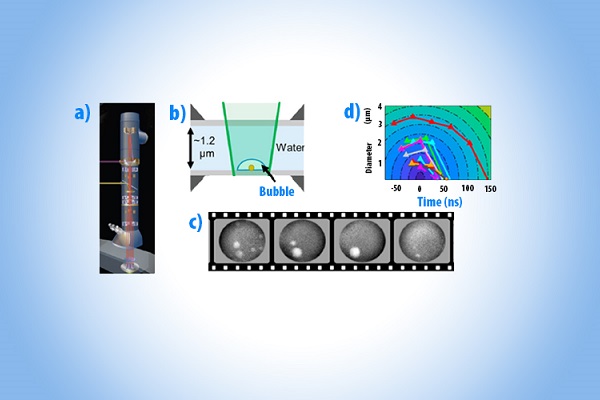
LLNL researchers combined a unique a) Dynamic Transmission Electron Microscope with b) a liquid cell to produce the first ever c) time resolved images of d) nanoscale bubble dynamics.
In the past, single-shot optical imaging, with short laser pulses used to illuminate the bubble at set times relative to bubble initiation, has been applied to achieve the requisite temporal resolution. However, fundamental limits to the spatial resolution of optical microscopy restrict the practicality of this approach when bubbles reach the nanoscale and the single image nature limits its usefulness for complex and non-repeatable interactions.
To take the images at the nanoscale, the LLNL team shot a 532-nanometer laser pulse (about 12 nanoseconds [ns]) to excite gold nanoparticles inside a 1.2 micron layer of water. The resulting bubbles were observed with a series of nine electron pulses (10 ns) separated by as little as 40 ns peak-to-peak. The researchers found that isolated nanobubbles were observed to collapse in less than 50 ns, while larger (∼2−3 micron) bubbles were observed to grow and collapse in less than 200 ns.
Isolated bubbles were observed to behave consistently with models derived from data from much larger bubbles. The formation and collapse were observed to be temporally asymmetric, which has implications for how results from alternate methods of experimental analysis are interpreted. More complex interactions between adjacent bubbles also were observed, which led to bubbles living longer than expected and rebounding upon collapse.
Read the original article on Lawrence Livermore National Laboratory (LLNL).


